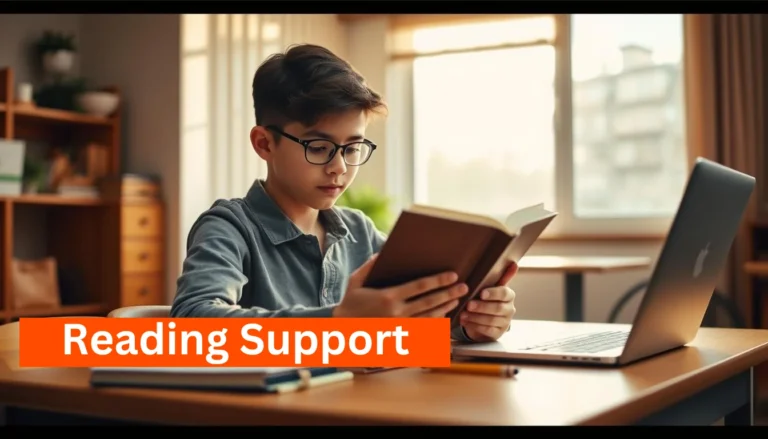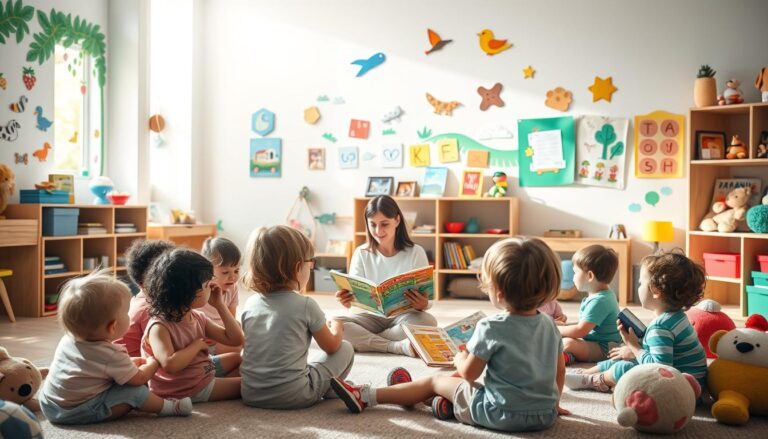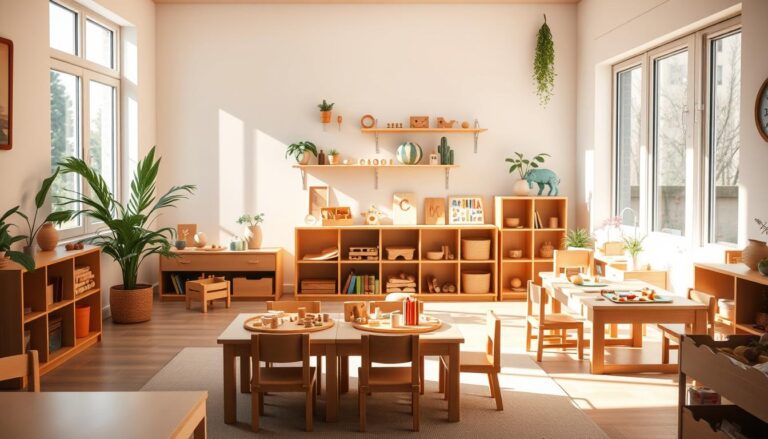Home Pre-School on a Budget: Money-Saving Tips
Have you ever wondered if it’s possible to provide a quality early learning experience for your child without breaking the bank? Many families face this challenge, especially when considering the costs of traditional programs. The good news is, there’s a way to create a nurturing and educational environment right in your own space.
We’ve seen how parents in San Diego and other areas have successfully designed programs that focus on their child’s development while saving on expenses. By using simple materials like construction paper and markers, they’ve crafted engaging activities that foster creativity and learning.
In this guide, we’ll explore practical strategies to build a flexible and effective curriculum. From daily learning activities to financial assistance options, we’ll provide actionable tips to help you create a program that fits your family’s needs. Ready to discover how you can make early education work for you? Let’s dive in!
Understanding the affordable home preschool Approach
Creating a nurturing learning space for your child doesn’t have to be expensive or complicated. Many families are turning to home-based programs to provide a personalized and flexible early education experience. This approach allows parents to tailor activities to their child’s unique needs while saving on costs.
Benefits of a Home Preschool Environment
A home-based learning setting offers numerous advantages. Parents can design a curriculum that aligns with their child’s interests and developmental stage. This flexibility ensures that learning activities are both engaging and effective.
Reduced class sizes mean more one-on-one attention. This individualized focus helps children grasp concepts at their own pace. Additionally, families save time and money by eliminating daily commutes to traditional centers.
Comparing Home-Based Learning to Traditional Preschools
Traditional preschools often follow a structured curriculum designed for larger groups. While these programs provide valuable social interactions, they may not address each child’s specific needs. Home-based learning, on the other hand, fosters creativity and adaptability.
Using everyday materials, parents can create diverse learning activities that encourage exploration. This hands-on approach supports early childhood development while keeping costs low. Families also benefit from the convenience of a flexible schedule, making it easier to balance work and education.
Setting Up Your Home Preschool on a Budget
With a little creativity, you can build an engaging educational environment without overspending. Designing a learning program tailored to your child’s needs doesn’t have to strain your wallet. By using everyday items and free resources, you can create a space that fosters growth and curiosity.
Designing a Child-Centered Curriculum with Low-Cost Materials
Start by choosing materials that are both simple and effective. Items like construction paper, markers, and recycled objects can be transformed into fun learning tools. These resources encourage creativity while keeping costs low.
Focus on activities that align with your child’s interests. For example, if they enjoy drawing, use colored pens to teach shapes and symbols. This approach ensures that learning feels like play, making it more engaging for your preschooler.
Incorporate free resources like downloaded activity guides and online teaching tools. These can provide structure and variety to your program. Many websites offer printable worksheets and interactive games that support early childhood development.
Repurposed materials can also play a key role. Old magazines, cardboard boxes, and fabric scraps can be used for art projects and sensory activities. This not only saves money but also teaches your child the value of reusing and recycling.
For more structured guidance, consider exploring online education programs. These can offer additional ideas and support for building a well-rounded curriculum.
Implementing Budget-Friendly Learning Activities and Curriculum Ideas
Designing a structured yet flexible program for young learners can be both fun and economical. By incorporating simple materials and creative ideas, you can create a daily routine that keeps your child engaged and learning. Here’s how to get started.
Day-by-Day Preschool Activity Guides
A well-planned schedule ensures a mix of learning and play. Start each day with calendar time and songs to set a positive tone. Follow this with focused activities like alphabet review or counting games using everyday items like pumpkins or feathers.
- Monday: Focus on letters and sounds with a fun “Letter Fly Swat” game.
- Tuesday: Practice number recognition with a counting sticker booklet.
- Wednesday: Explore sensory play with materials like rice or fabric scraps.
- Thursday: Engage in art-based projects using markers and construction paper.
- Friday: Wrap up the week with journaling and a review of what was learned.
Leveraging Inexpensive Art Supplies and DIY Tools
Art projects are a great way to foster creativity without spending much. Use items like recycled cardboard, old magazines, and fabric scraps for crafting. Simple supplies like markers, glue, and construction paper can transform into imaginative learning tools.
For example, create a “Color Clean Up” activity where your child sorts objects by color. This not only teaches categorization but also makes cleaning up fun. DIY tools like homemade playdough or sensory bins can also enhance hands-on learning.
Combining Child-Directed and Adult-Guided Learning Techniques
Balancing structured activities with free play is key to a successful program. Set up small learning centers at home where your child can explore independently. Provide adult-guided support during focused tasks like counting or letter recognition.
For instance, during a counting game, guide your child to place numbered ping pong balls in order. Then, let them lead the next activity, like drawing or building with blocks. This approach encourages independence while ensuring learning goals are met.
By blending these techniques, you can create a program that adapts to your child’s pace and interests. This ensures a rewarding learning experience without stretching your budget.
Integrating Child Development Strategies in Your Home-Based Preschool
Focusing on play and inquiry can transform your child’s learning experience at home. These methods tap into their natural curiosity, making education both engaging and effective. By integrating proven strategies, you can create a program that supports their growth in meaningful ways.
Utilizing Play-Based and Inquiry-Based Methods
Play is a powerful tool for early childhood development. It allows children to explore, experiment, and learn at their own pace. Inquiry-based methods encourage them to ask questions and solve problems, fostering critical thinking skills.
Here are some ways to incorporate these approaches:
- Encourage independent play with blocks, puzzles, or sensory bins. This builds creativity and problem-solving skills.
- Use open-ended questions during activities to spark curiosity. For example, ask, “What do you think will happen if we mix these colors?”
- Blend structured tasks with free play. Guided activities like counting games can be followed by creative drawing or building projects.
These methods create a natural and enjoyable learning atmosphere. They also help children develop cognitive, emotional, and physical skills in a balanced way.
For example, sensory play with materials like rice or water enhances fine motor skills. Storytime sessions improve language development and listening abilities. By combining these activities, you can meet your child’s developmental needs while keeping them engaged.
Remember, the goal is to create a program that adapts to your child’s pace and interests. This ensures a rewarding and effective learning experience for the whole family.
Navigating Financial Assistance, Community Resources, and Home-Based Child Care Options
Finding ways to support your child’s early education journey can be easier with the right resources. Many families face financial challenges, but government and community programs can help. By exploring these options, you can ensure your child receives quality learning experiences without overwhelming your budget.
Understanding Government and State-Funded Programs
Government programs like Head Start and the Child Care and Development Fund (CCDF) offer valuable support. Head Start provides free early education for low-income families, focusing on children from birth to age five. CCDF helps families cover child care costs while parents work or attend school.
To access these programs, use online tools like the Head Start Locator and Childcare.gov. These platforms provide accurate information on eligibility and application processes. Many states also offer preschool programs at low or no cost, depending on income guidelines.
Collaborating with Local Community Networks for Support
Local organizations and non-profits often provide additional resources. Networking with these groups can lead to scholarships, fee assistance, or free learning materials. Family child care providers and community centers may also offer affordable options.
Here are some steps to connect with local support:
- Research community-based organizations in your area.
- Attend workshops or events to learn about available resources.
- Build relationships with family child care providers for personalized support.
These efforts not only ease financial burdens but also enhance the quality of your child’s learning experience. By leveraging these opportunities, you can create a nurturing and effective educational environment for your family.
Conclusion
Building a nurturing educational environment for your child is achievable with thoughtful planning and creativity. By focusing on a child-centered curriculum, you can create engaging activities that foster growth and curiosity. Simple materials and community resources make this approach both effective and cost-efficient.
Integrating development strategies, such as play-based learning, ensures your preschooler thrives in a supportive setting. Leveraging financial assistance programs can further ease the process, making quality education accessible for every family.
We encourage you to adapt these strategies to meet your unique needs. Investing time in your child’s early learning experience not only benefits their development but also strengthens family bonds.
With dedication and the right tools, you can provide a rewarding foundation for your child’s future. Start today and watch them flourish in a program tailored just for them.







